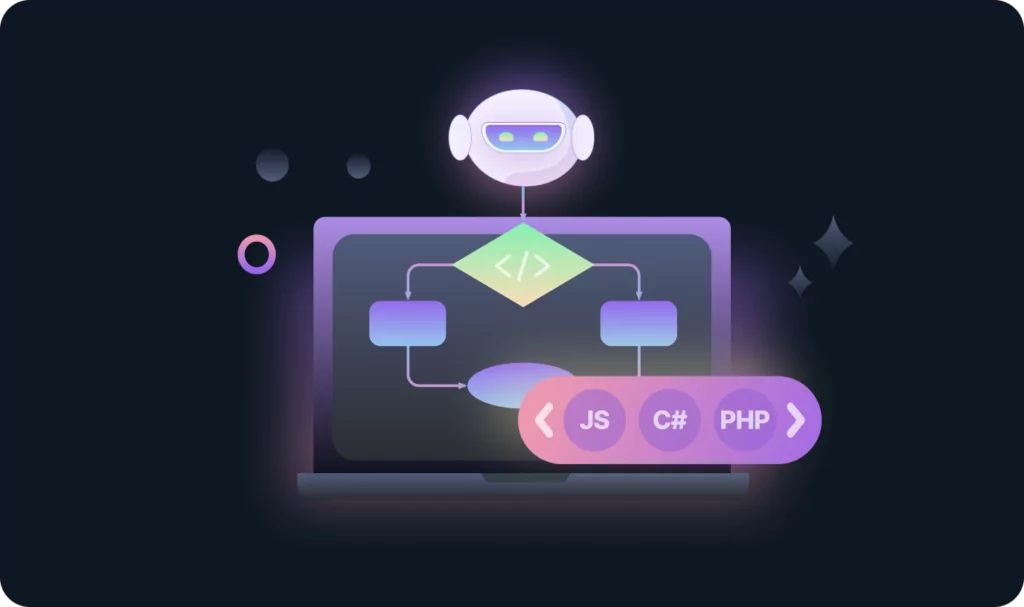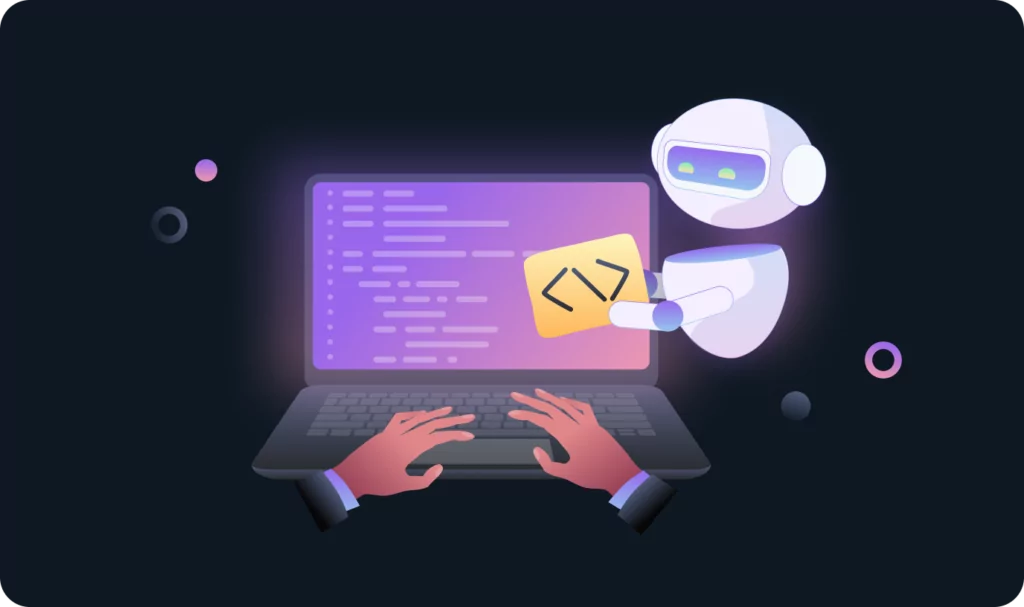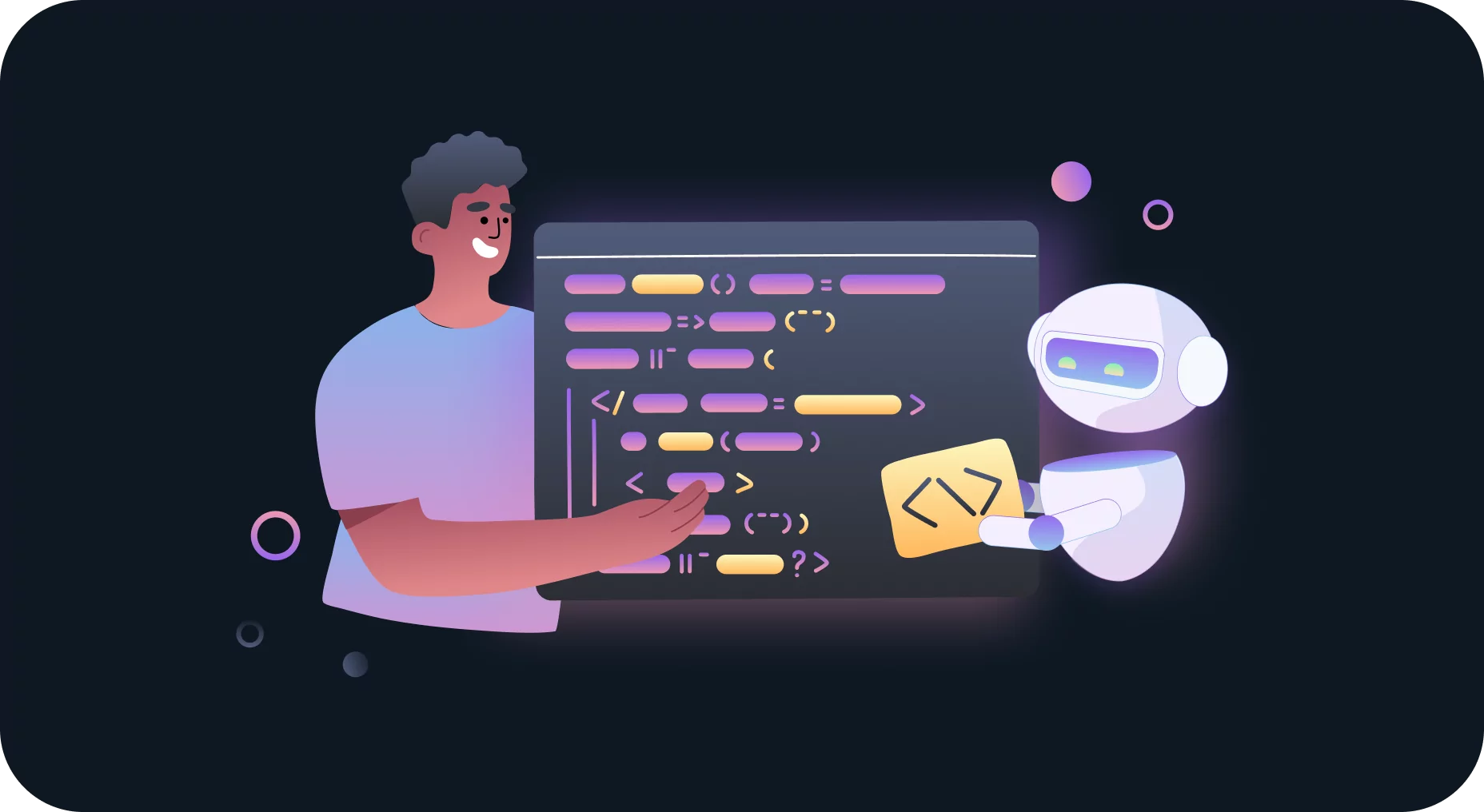Table of contents
Without a doubt, artificial intelligence technology started a new round of modern progress. Soon, understanding it, at least on a basic level, will become crucial, so you must start learning AI terminology fast. Today, we will begin our series of articles that provide a basic guide to AI by explaining some of the terms essential for understanding this tech. In future articles, we will explain how artificial intelligence works and AI software development services in greater detail.
You can already see how big and small businesses, governments, and ordinary people use AI in everyday activities. When we discover new technology, we try to make it a part of our daily lives. For example, with the invention of near-field communication (NFC), humankind came up with the idea of using it as a way of payment. Now, no one is surprised to see others paying with just a phone or hear NFC in regular conversation.
The same thing is happening to AI. First of all, AI is a set of techniques that imitates human behavior and completes the tasks that would usually require human intelligence. According to Forbes, the AI market is expected to reach $407 billion by 2027. Thus, providing yourself with AI techs is a win-win investment in your business success.

AI Terminology Cheat Sheet (in Alphabetical Order)
Chatbot
A chatbot is an app made to simulate human conversations. It uses NLP to process inputs and generative AI to automate responses. A chatbot can perform multiple functions. For example, it can assist businesses from within or to engage customers.
Computer Vision
Computer vision is a set of AI technologies that allows machines to analyze and interpret visual content. Driven by deep learning models, it can recognize patterns, objects, and even emotions in images. In addition, computer vision can process dynamic content and perform gesture recognition and motion analysis. Today, computer vision can analyze images at extreme speeds and identify objects with 99% accuracy. This technology is applied in various industries, from security to healthcare and self-driving vehicles.
Datasets
Datasets – are large collections of various types of digital data. They are a crucial element of any ML algorithm and are used to train AI systems to complete assigned tasks. The most popular public datasets are Kaggle, UCI, ImageNet, and Quandl.
Deep Learning (DL)
It is a subset of machine learning that relies on neural networks trained on massive amounts of data. In this context, “deep” refers to the use of multiple layers in the network. As AI networks become more complex, the importance of deep learning in the scope of AI terminology increases.
Generative AI
Generative AI is an AI algorithm whose primary function is to generate new output from the training dataset. Whereas traditional AI models mostly follow predefined rules to respond to inputs, generative AI can produce variable content such as images, video, text, and code. Also, it can create outputs either in the same prompted medium, like text-to-text, or in a different one, like text-to-image or image-to-video. A great example of generative AI is Midjourney, with its multiple features.
Large Language Models (LLMs)
LLMs are machine learning models trained on vast amounts of textual data. The most well-known example of an LLM is ChatGPT. A part of Devtorium AI software development services includes creating and training LLMs to deliver the output you need automatically.

Machine Learning (ML)
ML is a subset of AI development that enables machines to self-learn when dealing with specific tasks without preset coding. It’s one of the most basic terms in AI terminology today. There are many machine learning types and methods. Most of them use conditions (ifs), cycles, and internal variables to train the system`s algorithm. The developer needs to train the model using training datasets but does not change the code itself. Then, the model can be saved, loaded, or used to process new data.
Natural Language Processing (NLP)
The ability of AI-driven systems to analyze, comprehend, and generate human language is called NLP. The three main parts of any NLP are computer science, human language, and AI. Applications that require NLP include chatbots, text generators, translation tools, and autocorrect solutions. Chatbots, like Amazon’s Alexa and Apple’s Siri, utilize NLP to process user queries and find answers.
Neural Networks
Neural networks are models of teaching machines to recognize underlying patterns. The name refers to neurons in the human brain. It’s because the way this network operates looks pretty similar to them. This kind of structure enables neural networks to handle more complicated challenges than traditional programming.
Prompt Engineering
Prompt engineering is the process of creating specific instructions for LLMs to generate desired outputs. The instruction usually contains information on the way and form of outputting content. It’s a handy skill in the modern world because it allows users to interact with AI more efficiently.
What’s the Next Step After Learning Basic AI Terminology?
This little AI terminology cheat sheet should help you understand essential AI-related content. In order to explain the matter more deeply, we will continue expanding this AI terms glossary and explain how artificial intelligence is built and trained in our upcoming articles.
However, if you want to learn how exactly AI can benefit your business today, contact our experts to set up a free consultation.
For those of you who want to continue learning about artificial intelligence technologies, check out our older posts:




